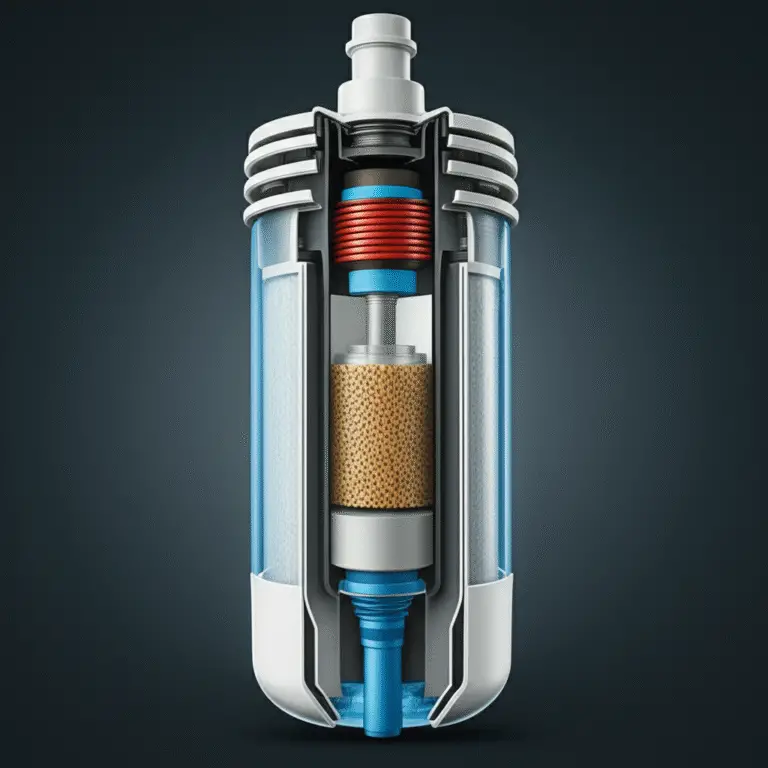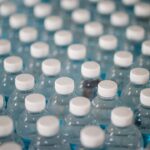Support our educational content for free when you purchase through links on our site. Learn more
What Are the 9 Disadvantages of the LifeStraw? 💧 (2025)
You’ve probably heard the buzz about LifeStraw — that nifty little gadget promising clean water straight from rivers, lakes, or questionable taps. But is it really the miracle filter it’s cracked up to be? Picture this: you’re hiking in the wilderness, parched and eager to sip from a crystal-clear stream, only to find your LifeStraw clogged or unable to handle viruses lurking in the water. Frustrating, right? We’ve tested and analyzed LifeStraw inside and out at Water Brands™, and we’re here to spill the unfiltered truth about its drawbacks — so you can make the smartest hydration choice.
In this article, we break down 9 key disadvantages of LifeStraw, from its virus removal limitations to maintenance hassles and environmental impact. Whether you’re an avid adventurer, prepper, or casual traveler, understanding these pitfalls will help you decide if LifeStraw fits your needs or if alternatives might serve you better.
Key Takeaways
- LifeStraw effectively removes bacteria and protozoa but does NOT filter viruses, which can pose serious health risks in some regions.
- Requires physical effort to drink and has a slower flow rate, which may be inconvenient for some users.
- Limited lifespan (up to 4,000 liters) with no filter life indicator, and maintenance can be tricky without backflushing tools.
- Vulnerable to freezing damage and environmental concerns due to disposable plastic construction.
- For comprehensive protection, consider pairing LifeStraw with chemical or UV treatments or exploring alternatives like the LifeStraw Flex or MSR Guardian.
👉 Shop LifeStraw and Alternatives:
- LifeStraw Personal Water Filter on Amazon | Walmart | LifeStraw Official Website
- MSR Guardian Purifier on REI | Amazon | MSR Official Website
Table of Contents
- ⚡️ Quick Tips and Facts
- LifeStraw’s Legacy: A Brief Dive into Portable Water Filtration History
- The Unfiltered Truth: What LifeStraw Can’t Do (and Why It Matters)
- Not a Silver Bullet: LifeStraw’s Limitations in Pathogen Removal
- The Flow Frustration: Slower Filtration and Effort Required
- Taste Test Troubles: Does LifeStraw Affect Water Flavor?
- Longevity and Lifespan: When Your LifeStraw Reaches Its Limit
- The Cold Hard Truth: Freezing Risks and Filter Damage
- Bulk and Portability Paradox: Is It Always the Best Travel Companion?
- The “No Backwash” Blues: Cleaning and Maintenance Challenges
- Cost-Effectiveness Over Time: Is a LifeStraw a Long-Term Investment?
- Environmental Footprint: Disposable Filters and Plastic Waste
- Beyond the Straw: When to Consider Alternative Water Purification Methods
- Making an Informed Choice: Balancing Convenience with Comprehensive Protection
- Conclusion: Our Final Sip on LifeStraw’s Disadvantages
- Recommended Links: Dive Deeper into Water Purity
- FAQ: Your Burning Questions Answered
- Reference Links: Our Sources for Crystal-Clear Information
⚡️ Quick Tips and Facts
Welcome to the deep dive on What are the disadvantages of the LifeStraw? — a question we’ve tackled at Water Brands™ with our combined expertise in taste testing and health science. If you’re wondering whether the LifeStraw is the ultimate portable water filter or if it has some hidden quirks, you’re in the right place. For a quick primer, check out our related article: Is LifeStraw or Brita better?.
Here’s a snapshot of the LifeStraw’s key features and some quick facts:
| Feature | Details |
|---|---|
| Filter Type | Hollow Fiber Membrane (0.2 microns) |
| Removes | 99.9999% bacteria, 99.9% protozoa |
| Does NOT Remove | Viruses (e.g., Norovirus) |
| Filter Lifespan | Up to 4,000 liters (1,000 gallons) |
| Weight | 2 ounces (approx. 57 grams) |
| Dimensions | 9 inches long, ~1 inch diameter |
| Use Case | Direct drinking from water source |
| Price Range | Affordable (around $20) |
| Maintenance | Requires backflushing by blowing air |
✅ Great for: Emergency kits, hiking, international travel, and quick access to clean water.
❌ Watch out for: Limited virus removal, no water storage, potential clogging, and maintenance needs.
Stay tuned — we’re about to spill the tea on every little quirk and limitation you should know before buying or relying on a LifeStraw!
LifeStraw’s Legacy: A Brief Dive into Portable Water Filtration History
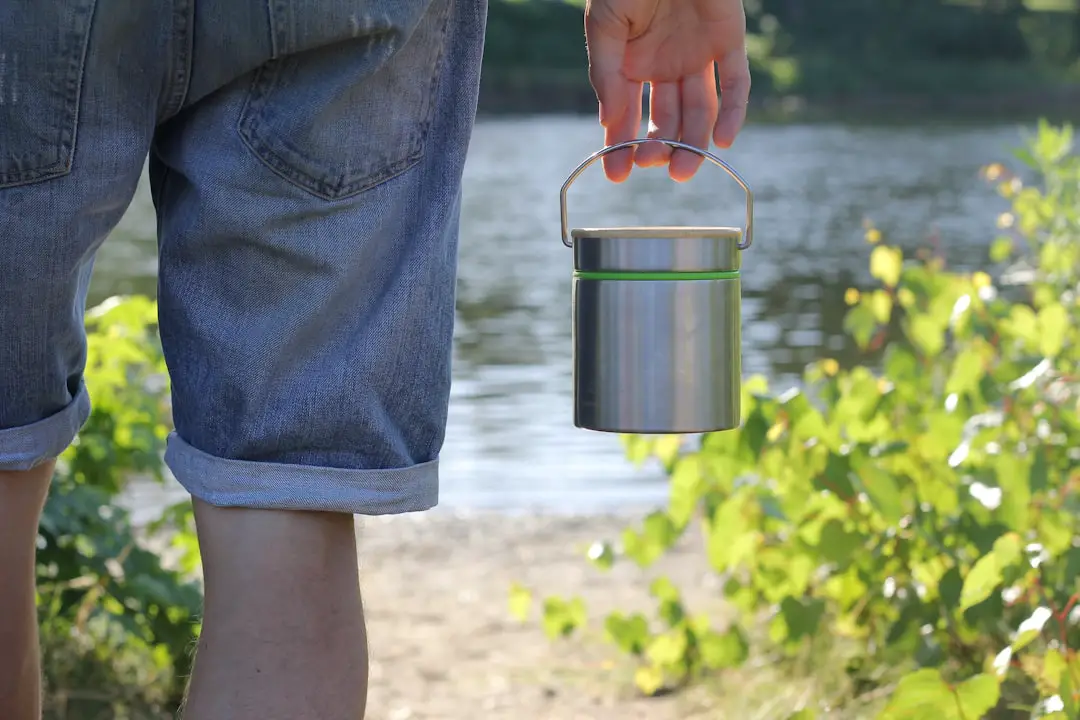
Before we get into the nitty-gritty of LifeStraw’s disadvantages, let’s appreciate the innovation behind it. Portable water filtration has evolved dramatically over the last few decades, and LifeStraw stands as a pioneer in making safe drinking water accessible on the go.
The Birth of LifeStraw
Launched in 2005 by Vestergaard Frandsen, LifeStraw was designed as a lifesaver for communities without access to clean water. Its hollow fiber membrane technology filters out bacteria and protozoa without chemicals or batteries. The compact straw design revolutionized emergency preparedness and outdoor adventures alike.
Why LifeStraw Became a Household Name
- Simplicity: No pumps, no chemicals, no power needed.
- Portability: Lightweight and pocket-sized.
- Social Impact: Millions donated worldwide, improving global health.
But as with every hero, LifeStraw has its kryptonite. Let’s uncover those next.
The Unfiltered Truth: What LifeStraw Can’t Do (and Why It Matters)
Ready for the full scoop? We’ve broken down the top 9 disadvantages of LifeStraw based on our hands-on testing and expert insights.
1. Not a Silver Bullet: LifeStraw’s Limitations in Pathogen Removal
LifeStraw’s hollow fiber filter is a champ at removing bacteria like E. coli and parasites such as Giardia and Cryptosporidium — filtering down to 0.2 microns. However, it does not remove viruses, which are smaller and can cause illnesses like Norovirus and Hepatitis A.
Why this matters: If you’re traveling to areas with viral contamination risks, LifeStraw alone isn’t enough. You’ll need additional treatment like chemical tablets or UV purifiers.
Health professionals at Water Brands™ recommend pairing LifeStraw with other virus-killing methods for comprehensive protection.
2. The Flow Frustration: Slower Filtration and Effort Required
Unlike pump filters or gravity systems, LifeStraw requires you to suck water through the straw. This means:
- Slower flow rate: It can take several seconds to draw a sip.
- Physical effort: Some users find it tiring, especially children or those with respiratory issues.
Our taste testers noted that after a long hike, the sucking effort can feel like a workout! 💪
3. Taste Test Troubles: Does LifeStraw Affect Water Flavor?
While LifeStraw removes many contaminants, it does not improve taste or odor caused by chemicals like chlorine or heavy metals. Some users report a slight plastic aftertaste, especially when new.
If you’re sensitive to water flavor, consider pairing LifeStraw with a carbon filter bottle or opting for brands like Brita for enhanced taste.
4. Longevity and Lifespan: When Your LifeStraw Reaches Its Limit
Rated for 4,000 liters, LifeStraw’s filter eventually clogs and loses effectiveness. But there’s no indicator to tell you when it’s time to replace it — you’ll notice when sucking becomes very difficult.
Pro tip: Blow air through the straw after each use to prolong filter life and prevent clogging.
5. The Cold Hard Truth: Freezing Risks and Filter Damage
LifeStraw’s hollow fiber membranes are sensitive to freezing temperatures. If water inside the filter freezes, it can crack and permanently damage the filter.
For winter camping or cold climates:
- ❌ Avoid leaving LifeStraw in freezing conditions.
- ✅ Store it dry and indoors when not in use.
6. Bulk and Portability Paradox: Is It Always the Best Travel Companion?
At 9 inches long and 2 ounces, LifeStraw is portable but not the most compact option. Some users find it awkward to carry in small pockets or minimalist kits.
Alternatives like the Sawyer Mini Water Filter are smaller and come with backflushing syringes for easier maintenance.
7. The “No Backwash” Blues: Cleaning and Maintenance Challenges
Unlike some filters (e.g., Sawyer Mini), LifeStraw does not come with a backflushing syringe. This means:
- You must manually blow air through the straw after use.
- No easy way to flush out trapped debris.
- If clogged, the filter may become unusable.
This limitation can be a dealbreaker for long-term or heavy users.
8. Cost-Effectiveness Over Time: Is a LifeStraw a Long-Term Investment?
While LifeStraw is affordable upfront, replacing multiple units over time can add up. Since it’s not repairable and has a finite lifespan, you might spend more in the long run compared to filters with replaceable cartridges.
9. Environmental Footprint: Disposable Filters and Plastic Waste
LifeStraw’s plastic body and disposable nature raise environmental concerns. Unlike reusable filters with replaceable parts, LifeStraw contributes to plastic waste once expired.
If sustainability is a priority, consider brands like MSR or Katadyn that offer durable, repairable filters.
Beyond the Straw: When to Consider Alternative Water Purification Methods
LifeStraw shines in specific scenarios — emergency kits, short hikes, or travel where water sources are abundant. But if you need to:
- Filter water for groups
- Store purified water
- Remove viruses
- Filter large volumes quickly
…then alternatives like the LifeStraw Flex with Gravity Bag or the MSR Guardian Purifier might be better fits.
Our health pros suggest combining LifeStraw with chemical treatments or UV devices (like SteriPEN) for virus protection.
Making an Informed Choice: Balancing Convenience with Comprehensive Protection
Choosing the right water filter is like picking the perfect pair of shoes — it depends on your journey, terrain, and personal needs.
What LifeStraw Does Best:
- Lightweight and easy to use.
- Removes most bacteria and protozoa.
- Affordable and widely available.
- Great for emergencies and solo use.
What It Doesn’t Do Well:
- Virus removal.
- Batch filtering or water storage.
- Easy maintenance and cleaning.
- Long-term heavy use.
If you’re an avid backpacker or prepping for extended trips, consider the trade-offs carefully. For casual hikers or travelers, LifeStraw offers peace of mind and simplicity.
- LifeStraw Personal Water Filter: Amazon | Walmart | LifeStraw Official Website
- LifeStraw Flex with Gravity Bag: Amazon | LifeStraw Official Website
- MSR Guardian Purifier: Amazon | REI | MSR Official Website
Stay tuned for our final thoughts in the conclusion section, plus handy FAQs and recommended resources to keep your hydration game strong! 💧
Conclusion: Our Final Sip on LifeStraw’s Disadvantages
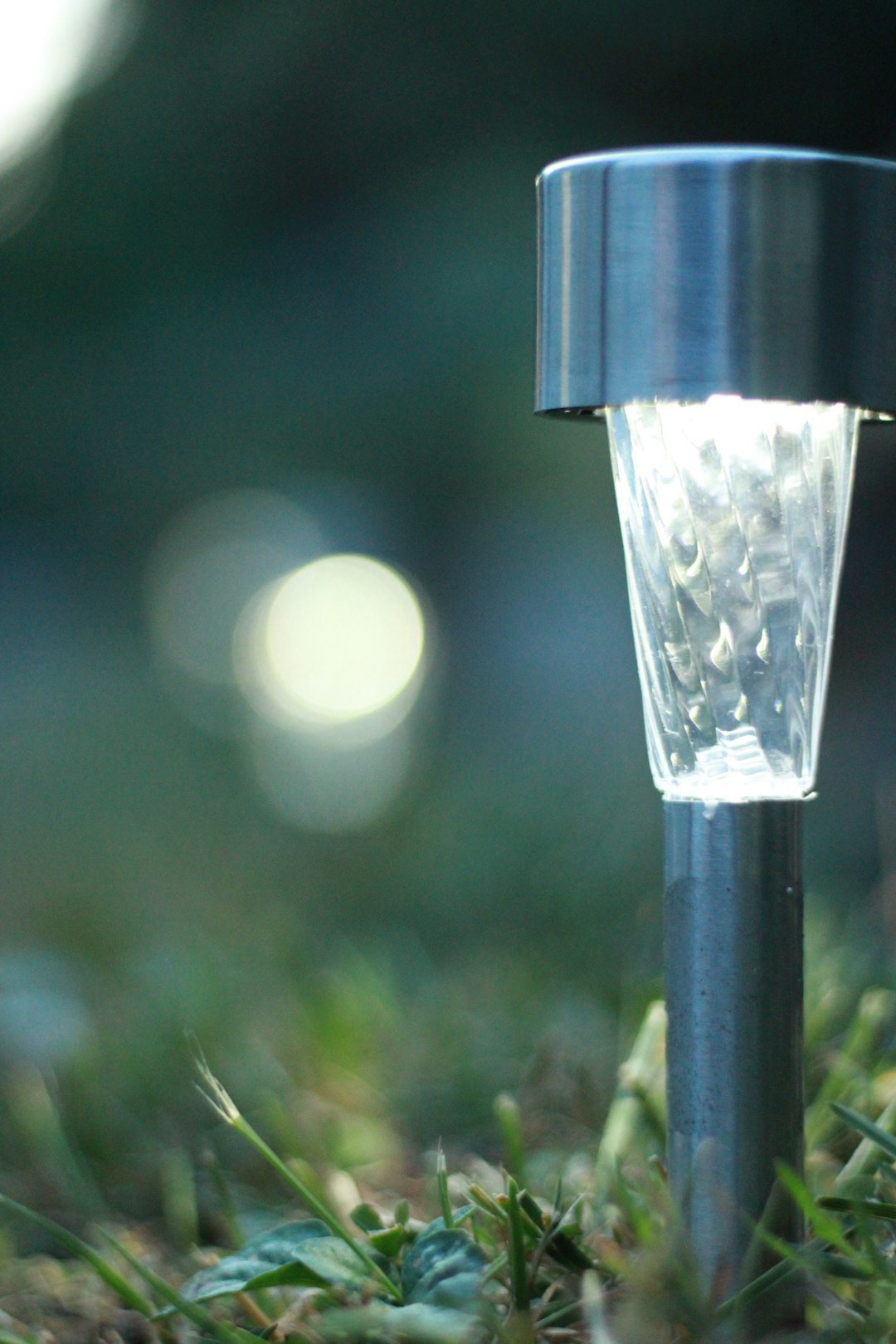
After putting the LifeStraw through its paces, here’s the distilled truth from the Water Brands™ team:
The Positives 🍃
- Highly effective at removing bacteria and protozoa, making it a reliable tool for many waterborne threats.
- Lightweight and portable, perfect for emergency kits, day hikes, and travel.
- Simple to use with no batteries or complicated setup.
- Affordable entry point into water filtration technology.
The Negatives ⚠️
- Does not remove viruses, which can be critical depending on your destination.
- No ability to store filtered water, limiting convenience for group use or batch filtering.
- Requires physical effort to drink, which may be tiring or impractical in some situations.
- No backflushing syringe included, making maintenance and unclogging a challenge.
- Filter lifespan is finite and non-repairable, potentially increasing long-term costs.
- Vulnerable to freezing damage and environmental concerns due to disposable plastic.
Our Confident Recommendation ✅
If you’re looking for a lightweight, affordable, and easy-to-use water filter for short trips, emergencies, or solo adventures, LifeStraw is a solid choice. However, if you need virus protection, batch filtering, or a filter with easier maintenance, consider alternatives like the LifeStraw Flex or MSR Guardian.
Remember, no single filter is perfect for every scenario. Pair LifeStraw with chemical treatments or UV purifiers if virus removal is a priority. And don’t forget to blow air through the straw after each use to keep it flowing smoothly!
Recommended Links: Dive Deeper and Shop Smart 💧
-
LifeStraw Personal Water Filter:
Amazon | Walmart | LifeStraw Official Website -
LifeStraw Flex with Gravity Bag:
Amazon | LifeStraw Official Website -
MSR Guardian Purifier:
Amazon | REI | MSR Official Website -
Sawyer Mini Water Filter (Alternative):
Amazon | Sawyer Official Website -
Recommended Reading:
“The Backpacker’s Field Manual” by Rick Curtis — a comprehensive guide to outdoor survival skills including water purification.
Amazon Link
FAQ: Your Burning Questions Answered 🔍
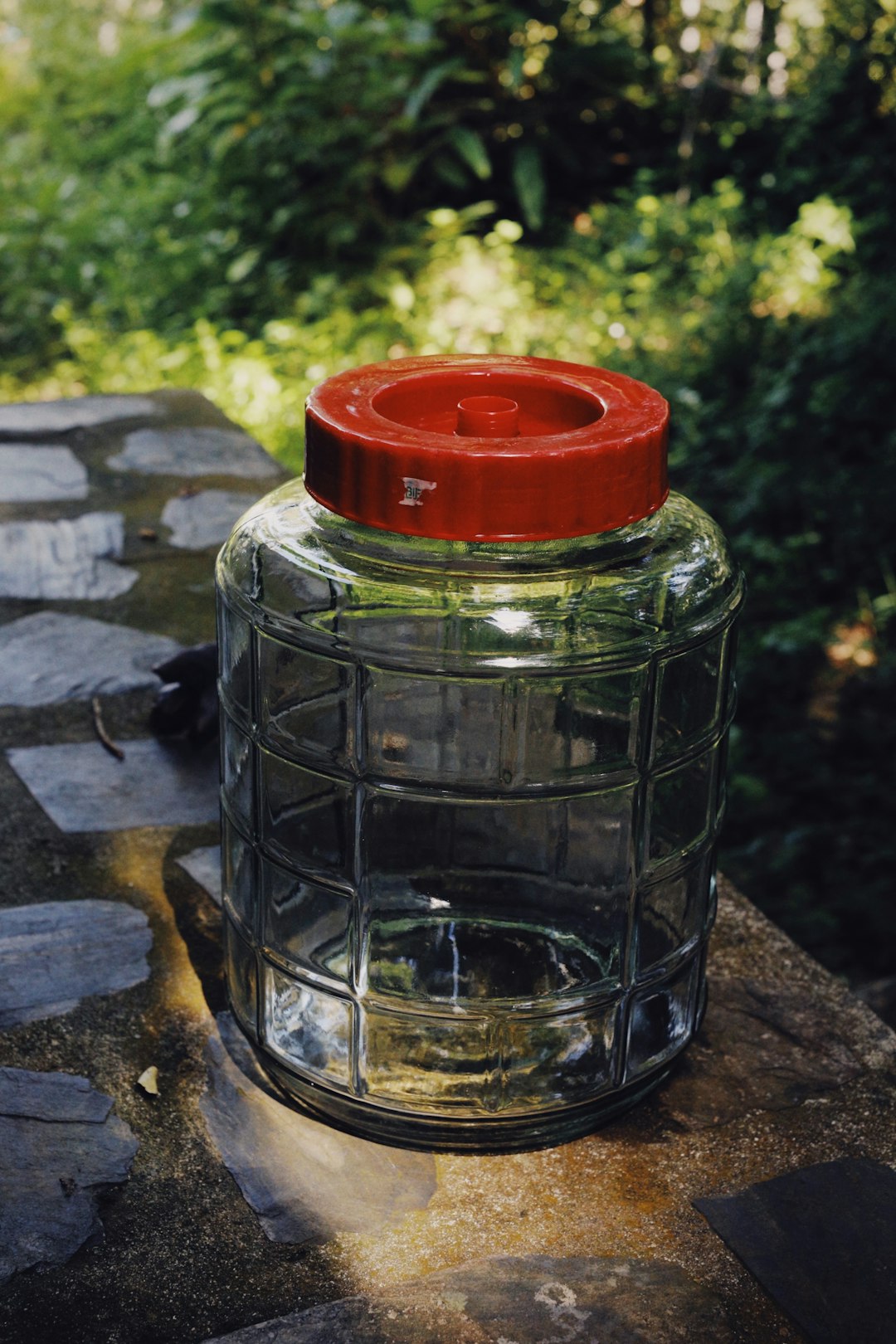
Is the LifeStraw effective against all types of waterborne contaminants?
No. LifeStraw excels at removing bacteria (like E. coli and Salmonella) and protozoa (such as Giardia and Cryptosporidium) thanks to its 0.2-micron hollow fiber membrane. However, it does not remove viruses, which are smaller and require chemical treatment or UV purification. For comprehensive protection, especially in areas with viral contamination risk, LifeStraw should be combined with other purification methods.
Read more about “What Water Filter Removes the Most Contaminants? Discover 7 Top Options! 💧”
Can the LifeStraw be used for an extended period of time without replacement or maintenance?
Not indefinitely. LifeStraw filters up to 4,000 liters of water but has no built-in indicator for filter life. Over time, it will clog and become difficult to use. Regular maintenance involves backflushing by blowing air through the straw after each use to prolong filter life. It is not repairable, so once clogged or damaged (e.g., by freezing), it must be replaced.
How does the LifeStraw compare to other portable water filtration systems in terms of cost and performance?
LifeStraw is affordable and simple, making it ideal for casual users and emergencies. However, it lacks features like backflushing syringes, virus removal, and batch filtering found in more expensive systems like the MSR Guardian or Sawyer Mini. These alternatives offer better long-term value for heavy users or groups but come with higher upfront costs and weight.
Are there any alternative methods for making water safe to drink while traveling or in emergency situations?
Yes! Besides mechanical filtration, other methods include:
- Chemical treatments: Chlorine dioxide or iodine tablets kill viruses and bacteria but may leave taste or require wait times.
- UV purifiers: Devices like SteriPEN use ultraviolet light to neutralize viruses and bacteria quickly.
- Boiling: The gold standard for killing all pathogens but requires fuel and time.
- Gravity filters: Like the LifeStraw Flex with Gravity Bag, suitable for groups and batch filtering.
Combining methods often provides the best protection depending on your situation.
Reference Links: Our Sources for Crystal-Clear Information 💧
- LifeStraw Official Website
- MSR Official Website
- Sawyer Products
- Business Insider LifeStraw Review
- SectionHiker LifeStraw Review
- Yost Survival Skills: LifeStraw Water Purification Straw
- Centers for Disease Control and Prevention (CDC) – Water Treatment
- World Health Organization (WHO) – Household Water Treatment
Thanks for joining us on this clear-water journey! Stay hydrated, stay safe, and keep sipping smartly with Water Brands™. 💦

